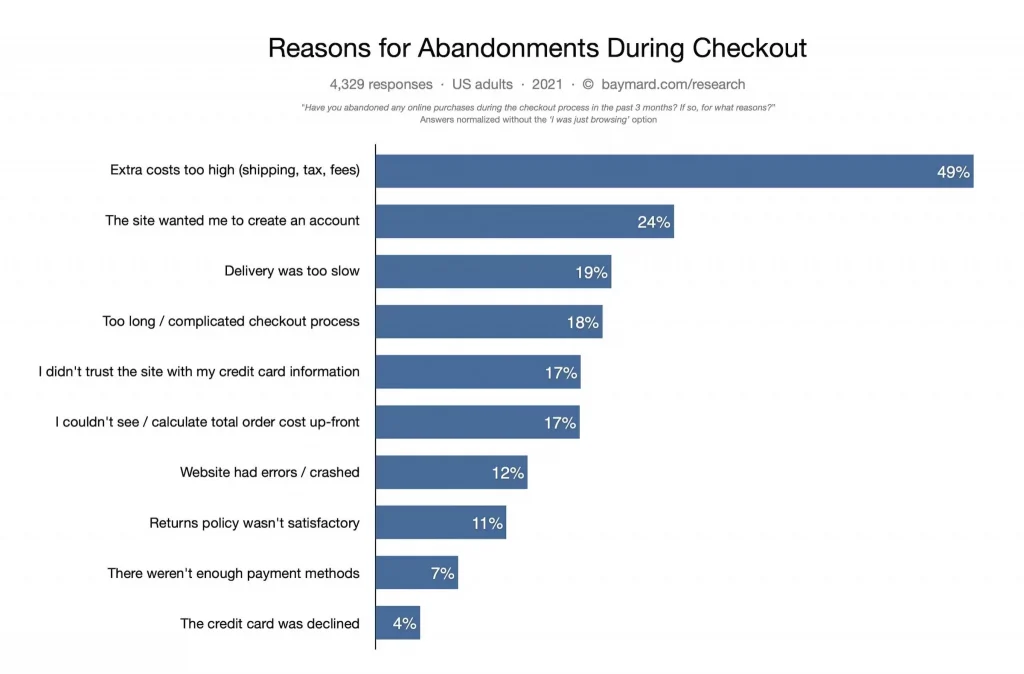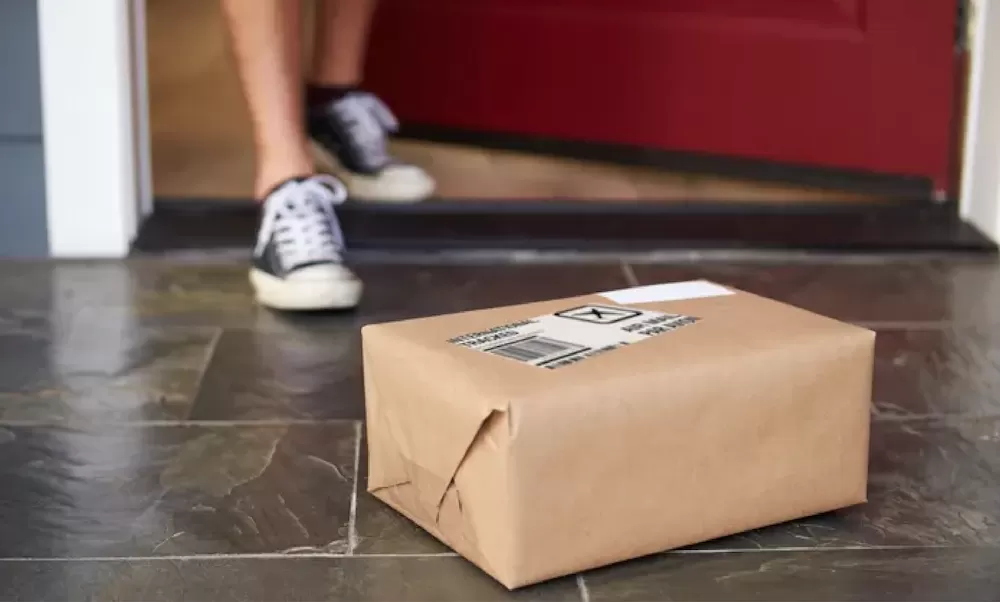Consumers are spending more money online than they do in brick-and-mortar stores, particularly during the busy holiday season. But these same online shoppers do something else that all retailers hate: They fill up carts without making a purchase. Nearly 70% of carts end up abandoned online, and about 85% of mobile shoppers exhibit this behaviour.
While it’s easy to rationalise cart abandonment as a standard practice, it is much more than a modern-day version of window shopping. Many factors can contribute to a consumer’s decision to abandon a full shopping cart before checking out.
Asking consumers to create a new account can certainly cause some of this hesitation. Also to blame are overly complex checkout processes, invalid discount codes, security concerns, questionable return policies, comparison shopping, etc. The list goes on, but one other barrier to purchasing seems to be a major sticking point for 63% of consumers: shipping costs.
Many retailers overlook the influence shipping costs play in their customers’ tendencies to abandon items in shopping carts, choosing instead to improve other aspects of the customer journey. While navigation and user experience play key roles in this journey, there is clear intent to purchase when a customer fills a shopping cart. By addressing that last hurdle, you can easily achieve:
• Higher Conversion Rates: The internet is a treasure trove of case studies touting free shipping’s sales benefits (though results will vary by retailer). When NuFACE implemented a free-shipping threshold, the skin care company saw orders increase by 90%. Meanwhile, other experts have found conversion rate bumps of approximately 50% by using similar tactics. Your product, purchase behavior and profit margins will determine whether this option will work for your business.
• Lower Abandonment Rates: Cart abandonment is a much bigger problem than you might think — it leads to an estimated $4.6 trillion in lost sales annually. A better checkout process can often correct issues and increase conversion rates by 35%. Of the countless ways you can optimise checkout, one of your main priorities should be addressing shipping and handling costs.
• More Repeat Business: The happier the customer, the more likely they’ll return for another purchase. One study found that 42% of consumers will make additional purchases after a positive experience with a business, and many will become loyal customers. Addressing the costs associated with shipping and handling is often one of the easiest ways to improve the overall customer experience.
By far one of the biggest misconceptions for many retailers revolves around free shipping. Newcomers to the ecommerce space often see free shipping as unattainable. In reality, the businesses that can benefit most from this service offering are small and midsized retailers looking to scale their companies, widen their reach and build customer loyalty.

Making Purchases Not as Costly Avoids Abandonment
There is no single reason why consumers choose to abandon their shopping carts. A lot of variables are at play within the online shopping experience. Considering the cost of goods will always be a concern, so why not remove or reduce that barrier by rethinking your shipping and handling approach? Here are a few great places to start:
1. Negotiate Better Shipping Rates
Negotiating shipping rates might not sound like the shrewdest tactic to remedy cart abandonment issues. But higher-than-expected shipping costs top even price comparison as the primary motivator for cart abandonment. It’s never a bad time to begin your price comparisons on shipping rates.
Even small businesses should be shopping around. Though their negotiating power may not be as strong as major retailers, they still have some leverage. It all comes down to two factors: Competitive landscape and shipping volume. In short, never take the prices listed on a carrier’s website as gospel.
Besides, your business has probably been solicited by other carriers already. Get on the horn with your carrier FedEx, DHL, Hermes etc for more information on current rates, but be sure to let your primary carrier know about your possible migration to a competitor. The sales rep might offer a lower rate to maintain your business.
2. Reduce Shipping Rates for Minimum Orders
You may not know this, but retailers like Walmart, and Amazon don’t offer free shipping unless customers meet a certain price threshold — or with a membership to its Walmart+ program; Target takes a similar tack. If this approach works for two of the country’s largest retailers, then it should work well for you and your business.
Experiment with minimum order values to arrive at the ideal price for customers. Because you’ll be absorbing shipping costs, review your margins to ensure free shipping doesn’t eat too much into your revenue. You may find that reduced shipping rates are a better option, and the same could be said for free shipping on certain products.
3. Offer periodic shipping deals
Even with a minimum order, free shipping isn’t always sustainable for small businesses throughout the year. Other shipping promotions can be just as tempting to consumers. Free shipping to first-time buyers, for example, is a promotion many retailers use as an alternative to offering a discount on first orders.
If you’re looking to add to your email list, you can offer a promo code for free shipping in exchange for an email address. You might also consider offering free shipping at certain times of the year. Much like reduced or free shipping with a minimum order, play around with various offers to find something that resonates with shoppers.
4. Outsource to a third-party logistics provider
Brick-and-mortar retailers generally use a business model where customers leave the store with their purchases — no packing or delivering required. As they move into the ecommerce space, however, that changes in a hurry. Suddenly, they face the complicated and unfamiliar task of order fulfilment.
Enter the third-party logistic provider (or 3PL, for short). Outsourcing fulfilment allows you to bypass the entire shipping process. Packing boxes, tracking orders and even warehousing goods are now in the hands of experts, enabling you to instead focus on your core competencies. More importantly, 3PLs bring a negotiating power that can lock in pricing for their customers and help you reduce shipping costs.
Suppose your business is shipping to new areas, subject to seasonal spikes or simply lacking the workforce to handle fulfillment. In that case, 3PLs can provide stability and flexibility with delivery while keeping your overall shipping costs down.
Businesses are always looking for new ways to make customers happy. On some level, a focus on shipping and handling just doesn’t seem as sexy as investing in user experience and site navigation. A site that’s visually appealing and easy to navigate can do wonders for getting consumers to fill their carts, after all.
But once they’re ready to check out, the sticker shock of shipping can lead shoppers to rethink their decision and leave behind full carts in the process. Take the time to explore your options with shipping and handling — it could make all the difference in your sales results.





